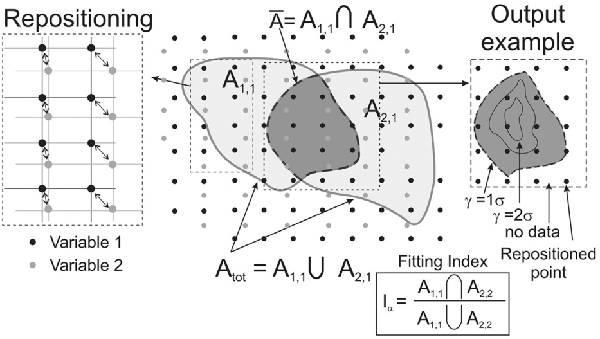PeakLocator 1.0, a web tool to compare extreme value areas among maps

Granieri D., M. de’ Michieli Vitturi, M. Bisson (2018).
Annals of Geophysics, 61, Doi:10.4401/ag-7813, in press.
Abstract
We present here a simple web application, PeakLocator 1.0 (hereafter referred to as PL1.0), for the analysis of gridded geo-located maps. In the present version of the code, the maps can contain up to 10 different variables with different units, not necessarily measured at the same locations, as well as the same variable recurrently measured in the time. The aim of PL1.0 is to identify regions where values lie outside the standard deviation from average values. The degree of spatial correspondence between these regions is reflected in the “fitting index” associated to the overlapping area. Here we demonstrate some possible applications of PL1.0 using published datasets, although its potential applicability extends to wide range of topics where the common demand is the comparison of two or more variables mapped over a common area or over areas partially overlapping. PL1.0 is freely accessible through a web interface and runs on any platform.


Devi effettuare l'accesso per postare un commento.